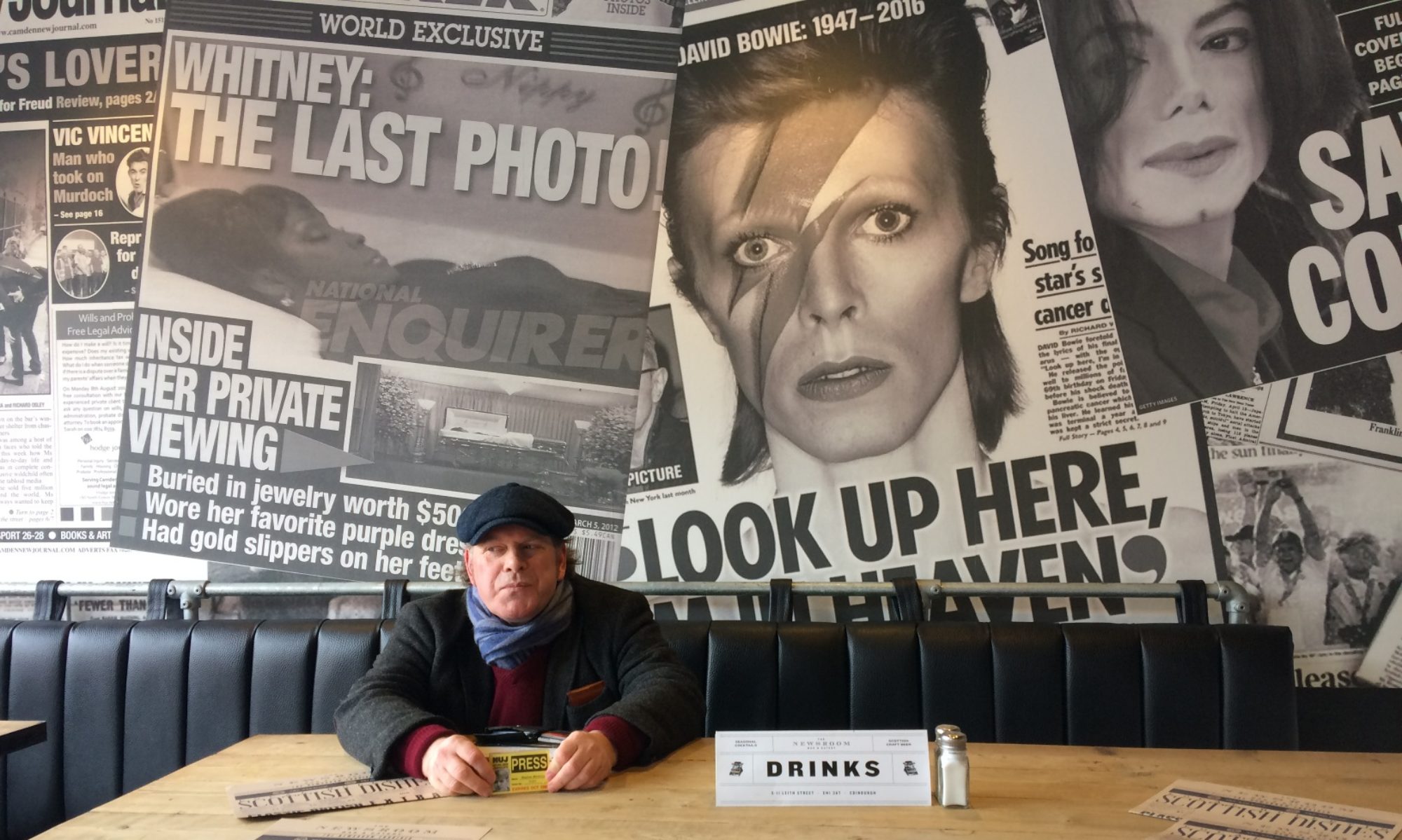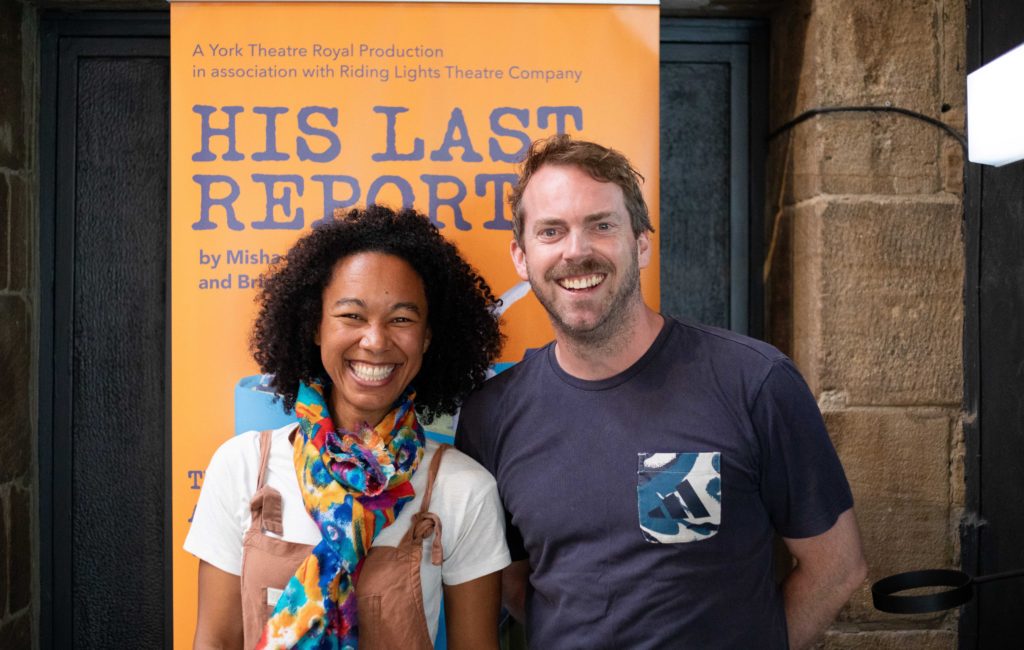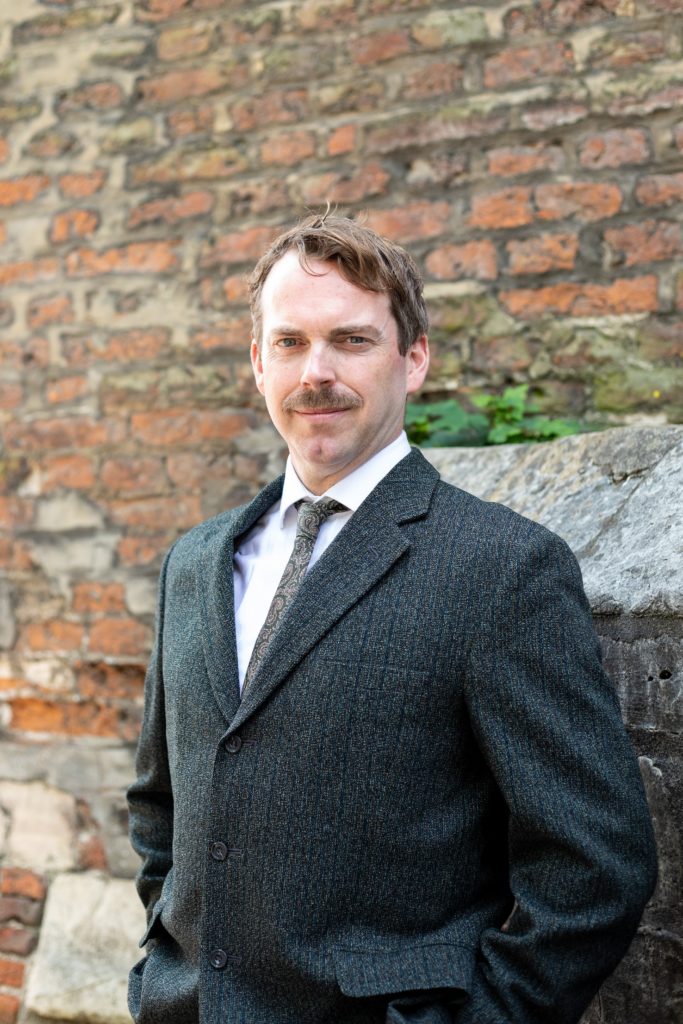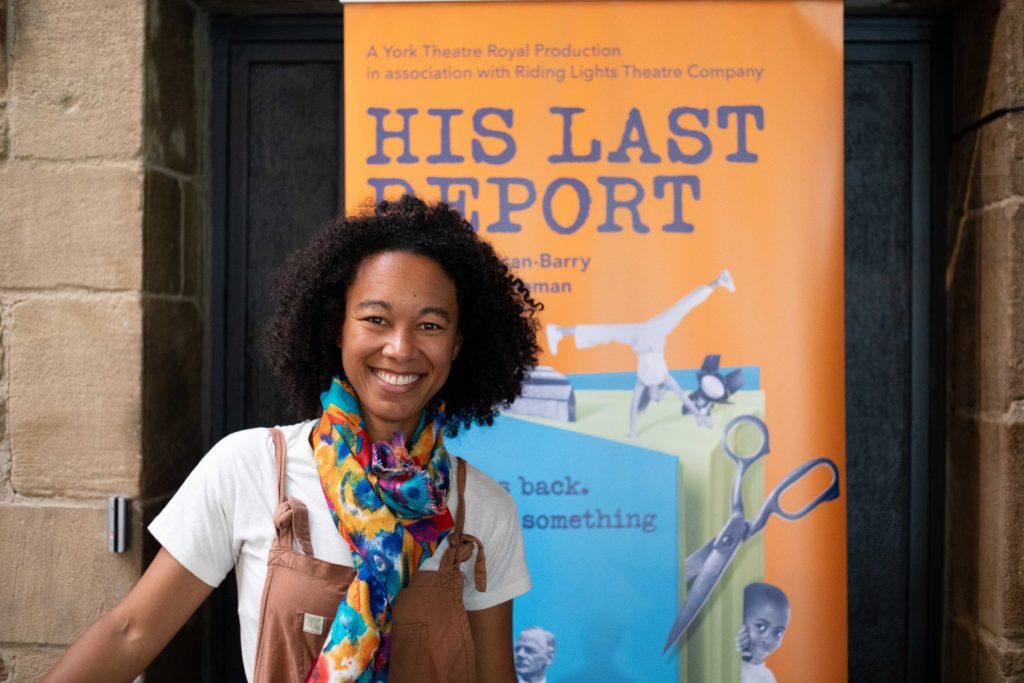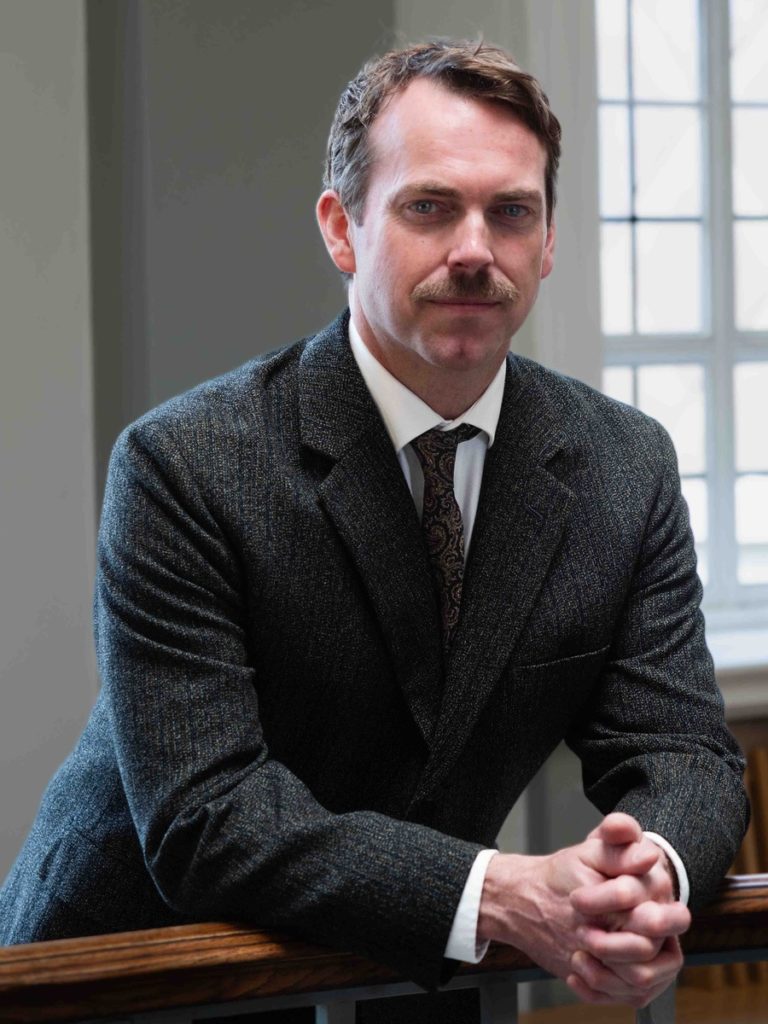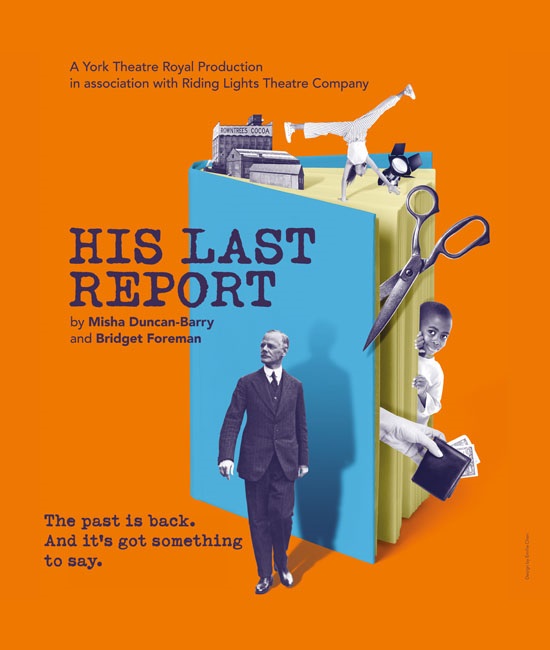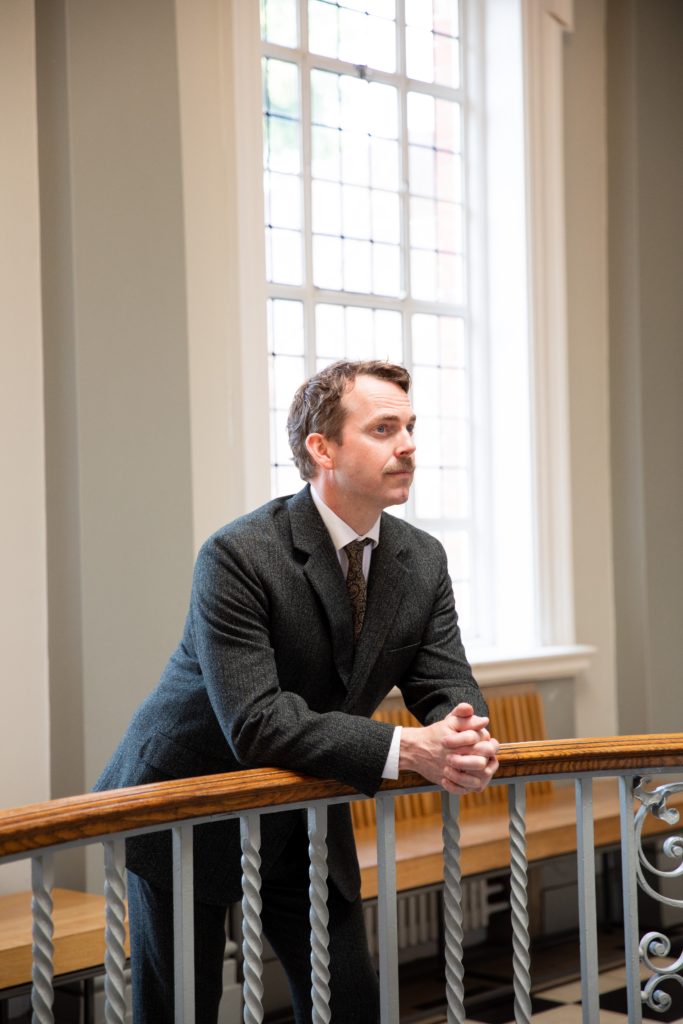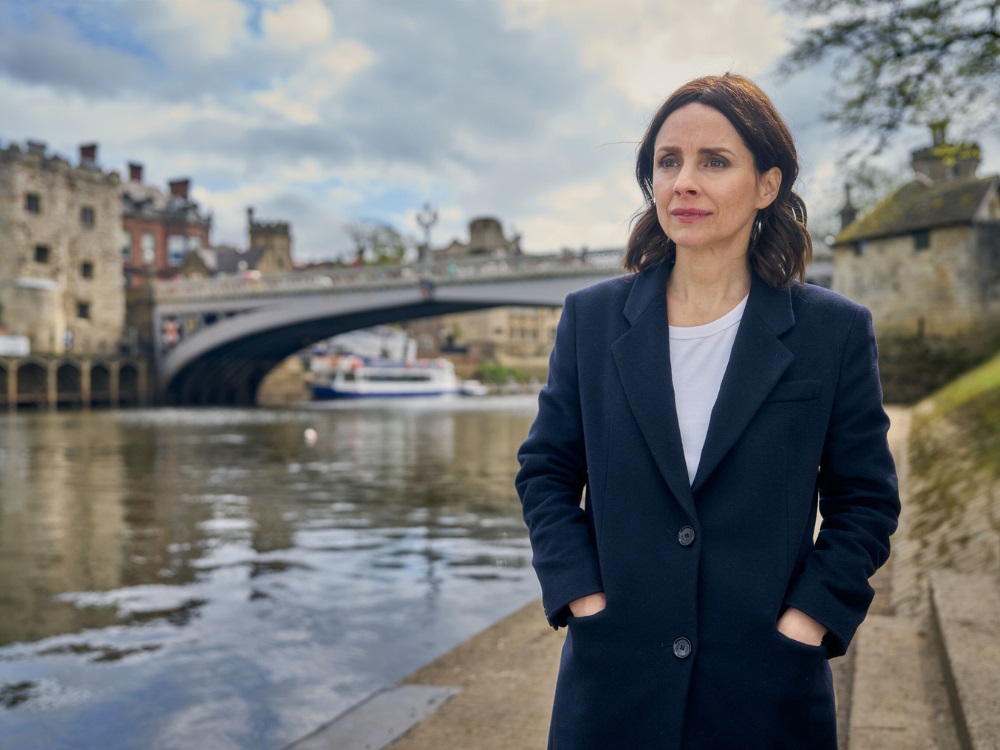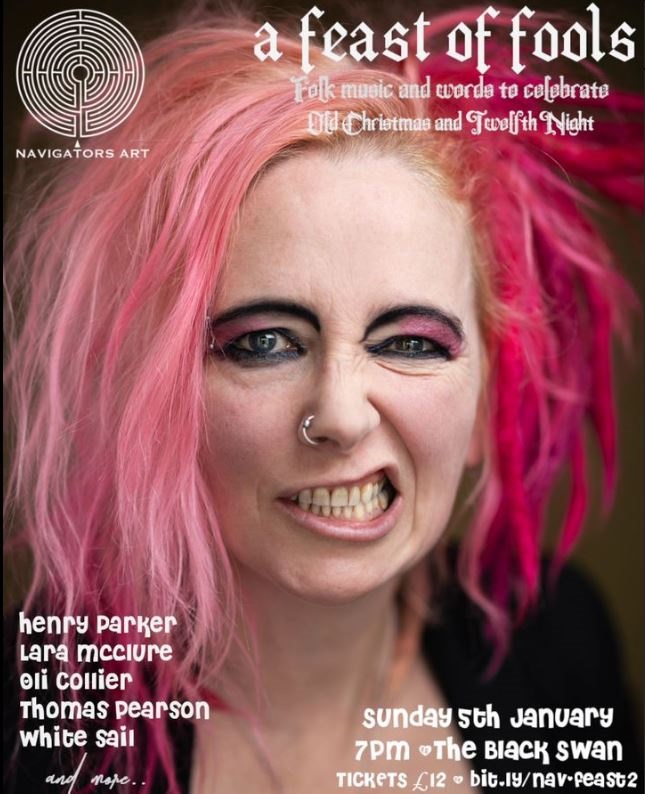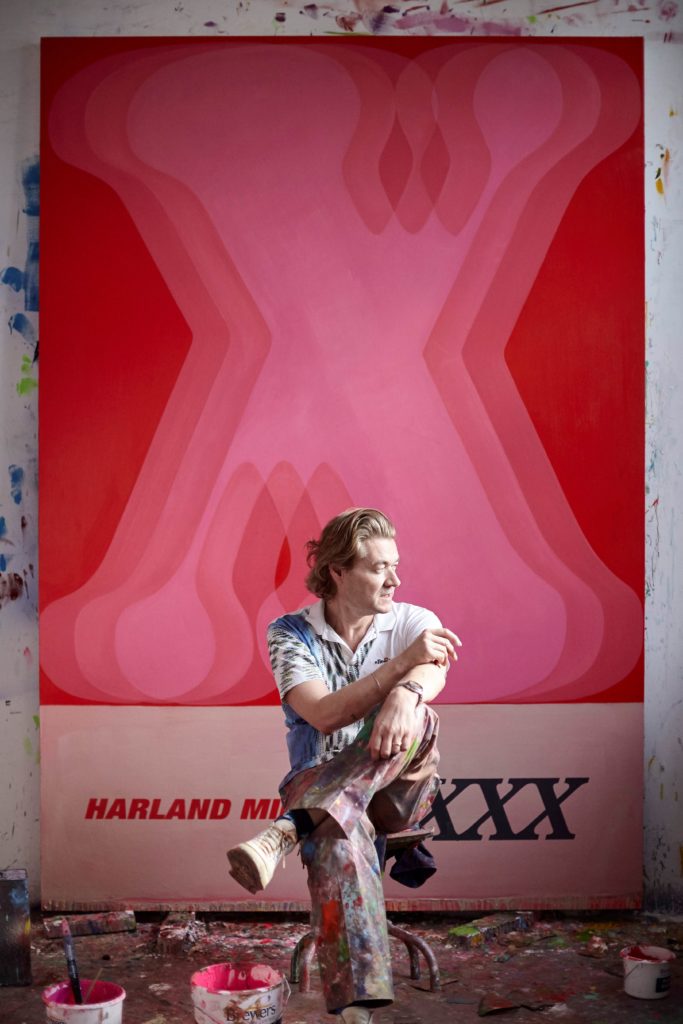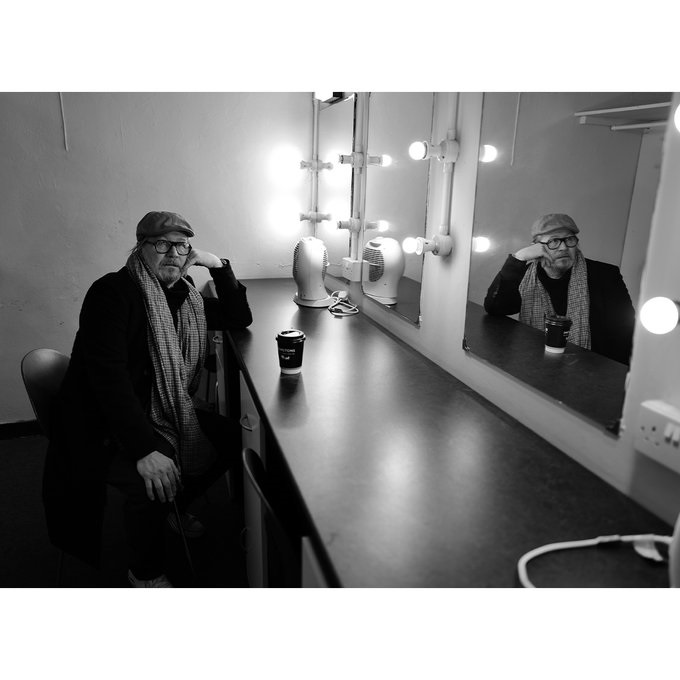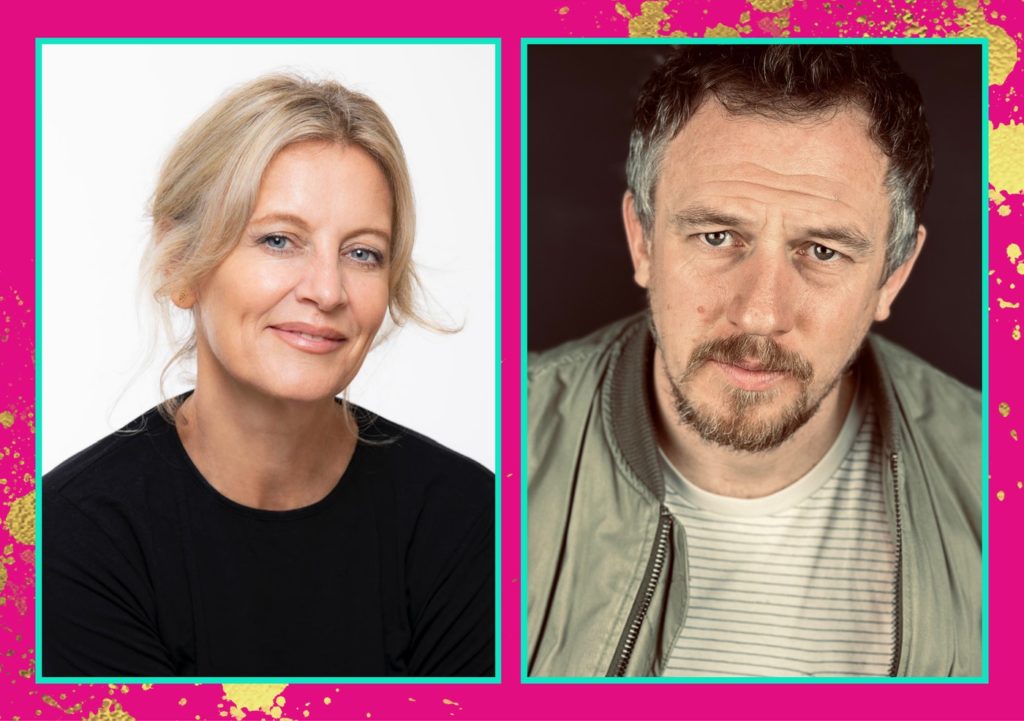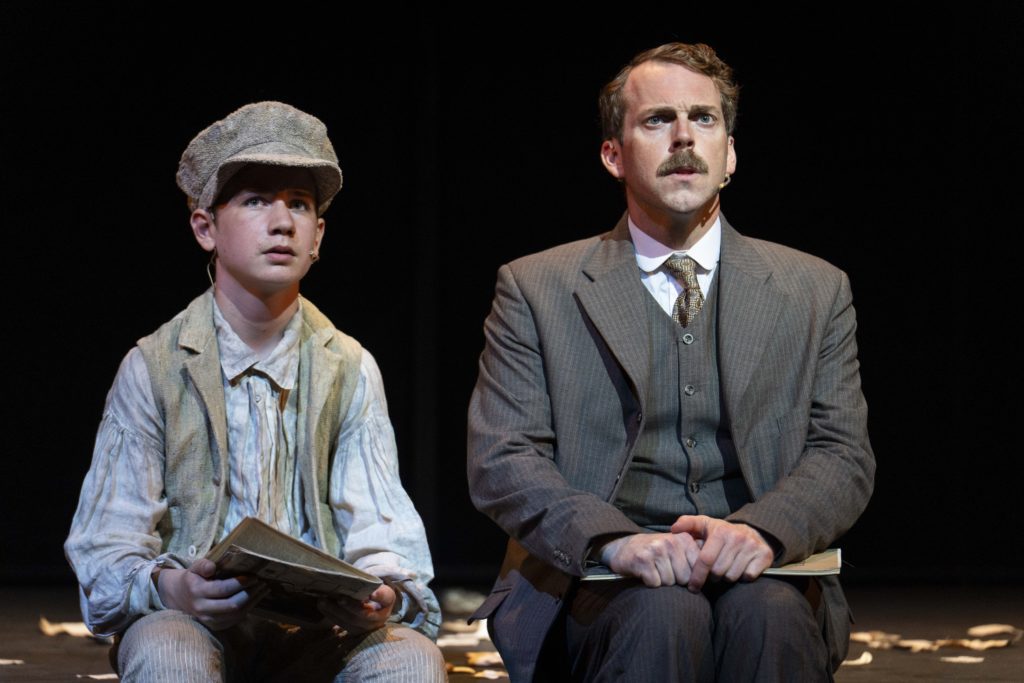
Billy Heathwood’s Riley, left, and Antony Jardine’s Seebohm Rowntree in His Last Report at York Theatre Royal. Picture: S R Taylor Photography
YORK Theatre Royal’s latest summer community play is in keeping with the progressive tenet of York social reformer Seebohm Rowntree’s trio of reports from 1899, 1936 and 1951. Community pulling together in enlightening enterprises. Welfare for the common man. Live well, play well, work well. He would probably have made the tickets free, but that isn’t practical.
“Made with passion, joy and enthusiasm”, in collaboration with York Christian theatre company Riding Lights, His Last Report involves 250 volunteers, from 100-strong cast and 55-larynxed York Theatre Royal Choir and new choir recruits, to wardrobe, props, stage management, hair & make up, technical, marketing, front of house and photography.
“The past is back. And it’s got something to say,” reads the tagline. It turns out it has a lot to say, arguably too much, over its two-and-three-quarter-hour span that crams in everything from politics to chocolate recipe improvements; cow parlour udder-pulling to aerial acrobatics; King Lear to Lloyd George and Winston Churchill; Caribbean chocolate trade slavery to the idyll of New Earswick; moo jokes to a salty dig at Saltaire visionary Sir Titus Salt.
Under the direction of Theatre Royal creative director Juliet Forster and Riding Lights artistic director Paul Birch, everything is thrown in, including the kitchen-sink style of British theatre and films of the gritty, grainy late-Fifties and Sixties, with echoes of Bertold Brecht and Kurt Weill’s Threepenny Opera too.
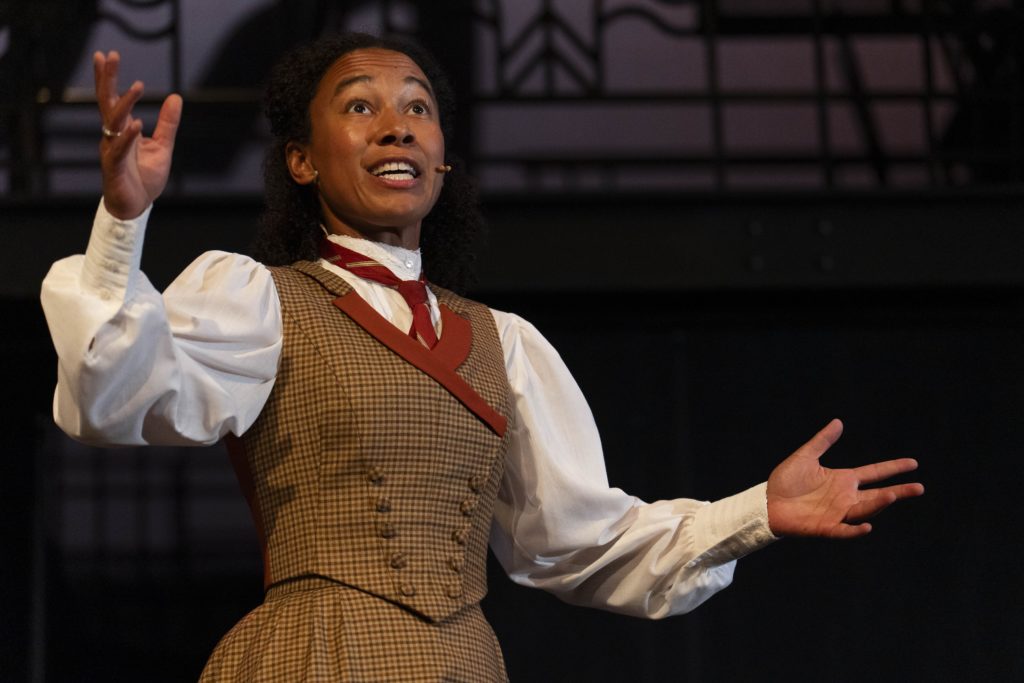
Amelia Donkor, one of two professional actors leading Juliet Forster and Paul Birch’s cast, in the role of Gulie Harlock in His Last Report. Picture: S R Taylor Photography
Misha Duncan-Barry and Bridget Foreman’s script has the restless, questing energy of York-born professional actor Antony Jardine’s Seebohm Rowntree, his name taken from his mother’s surname of Swedish-German origin, we learn in one of many facts dropped in with humorous relish.
We start at the end, Seebohm despondent post-reports, before heading back to 1890s’ York with personal secretary Gulie Harlock (Amelia Donkor), where his Quaker family’s cocoa works is booming, new Rowntree factory et al, under the noble guidance of father Joseph (Mark Payton, in a performance as bubbly as Aero, with a lightness of humour to match).
But something is not hitting the sweet spot for chemist, industrialist and philanthropist Seebohm. Blue-collar life is bitter, when it needs to be better for the factory workers, housed in the city’s back streets and snickelways. In tandem with Donkor’s perspicacious Gulie, he advocates better working and living conditions, improved wages and the provision of education for all and facilities to bolster both mental and physical health.
He never invented a chocolate bar called Nirvana, but his vision of a promised land of healthier, happier, wealthier workers that in turn benefits the productivity of businesses provides the seed bed for the welfare state, attracting the support of Churchill (Colin Beveridge) and Lloyd George (Andrew Wrenn).
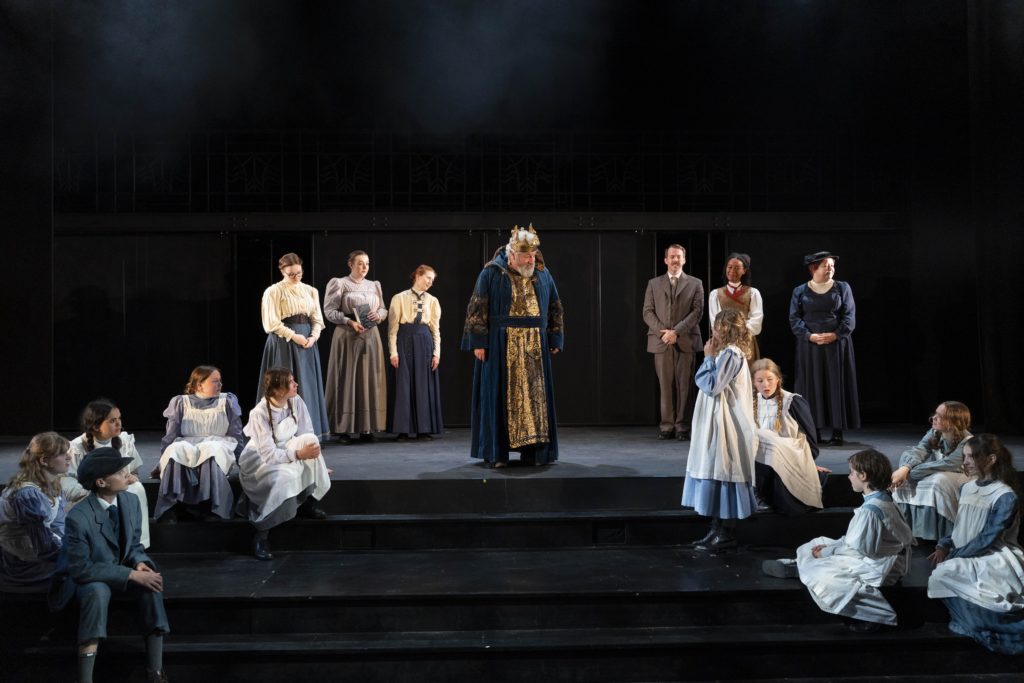
Maurice Crichton’s Frank Benson, centre, in King Lear guise in His Last Report, with principals and ensemble looking on in His Last Report. Picture: S R Taylor Photography
Welcome to New Earswick, the model of a village to house the workforce, with a school and a library. Welcome to Rowntree’s world of Yearsley Swimming Pool, the Joseph Rowntree Theatre, gymnastics, pageants and plays. All’s well but can it end well? Ah, there’s the rub. Finance. All the good things cost money.
Jardine’s Seebohm is haunted by the spectral figure of an impoverished child, Riley (Edmund Djimramadji/Billy Heathwood) that only he can see, and all around him the figures don’t add up. The second half turns post-modern, with modern clothing interwoven with period couture, references to writers Misha and Bridget and an in-joke impersonation of the Theatre Royal’s costume department Scottish supremo Pauline.
Rather than ending well it ends Orwellian, Jardine’s despairing Seebohm observing the Britain of today, the Britain of cuts to the arts and libraries, swimming pool and factory closures, robots replacing workers, jargon replacing plain speaking, and being number 52 on the waiting list when phoning the GP at 8am.
Maurice Crichton gives us his best King Lear in the guise of grandstanding actor Frank Benson railing against the way Shakespeare is taught at schools. You may find yourself thinking, “are we going too far off the beaten track here?”, but Crichton, not for the first time, makes every second in the spotlight count.
There is nevertheless a feeling that His Last Report is preaching to the converted, those of us who do go to the theatre, who know of its value beyond cost. Who needs to listen? Those who don’t go, those who slash and burn.

A modern-day board meeting full of blue sky/dark cloud thinking as His Last Report turns theatre of the absurd. Picture: S R Taylor Photography
You might wish the solution were as simple as waving a magic wand. Seebohm Rowntree tried to do more than that, but the truth is that in this rotten world, the good things increasingly cost too much, when even chocolate bars and tins are forever diminishing in size.
Forster and Birch’s cast and choir, as much as Duncan-Barry and Foreman, make an impassioned, worthy case for wishing that life could be as Seebohm envisaged. The theatrical scale is grand, the humour uneven, the ensemble spectacle impressive, orchestrated by David Gilbert’s movement direction. Edwin Gray’s compositions and sound design, in tandem with Madeleine Hudson’s vocal musical direction, are impactful throughout.
Returning after designing previous Theatre Royal community productions The Coppergate Woman and Everything Is Possible: The York Suffragettes, Sara Perks’s set design is five-star quality, whether evoking the Rowntree building, factory floor, boardroom, train carriage or cow parlour, complemented by Craig Kilmartin’s lighting and Hazel Fall’s delightful costumes.
One last thought, where is the Seebohm Rowntree of today?
York Theatre Royal and Riding Lights Theatre Company present His Last Report at York Theatre Royal until August 3, 7.30pm except Sundays and Mondays, plus 2pm matinees, July 26 and August 2 & 3. Box office: 01904 623568 or yorktheatreroyal.co.uk.
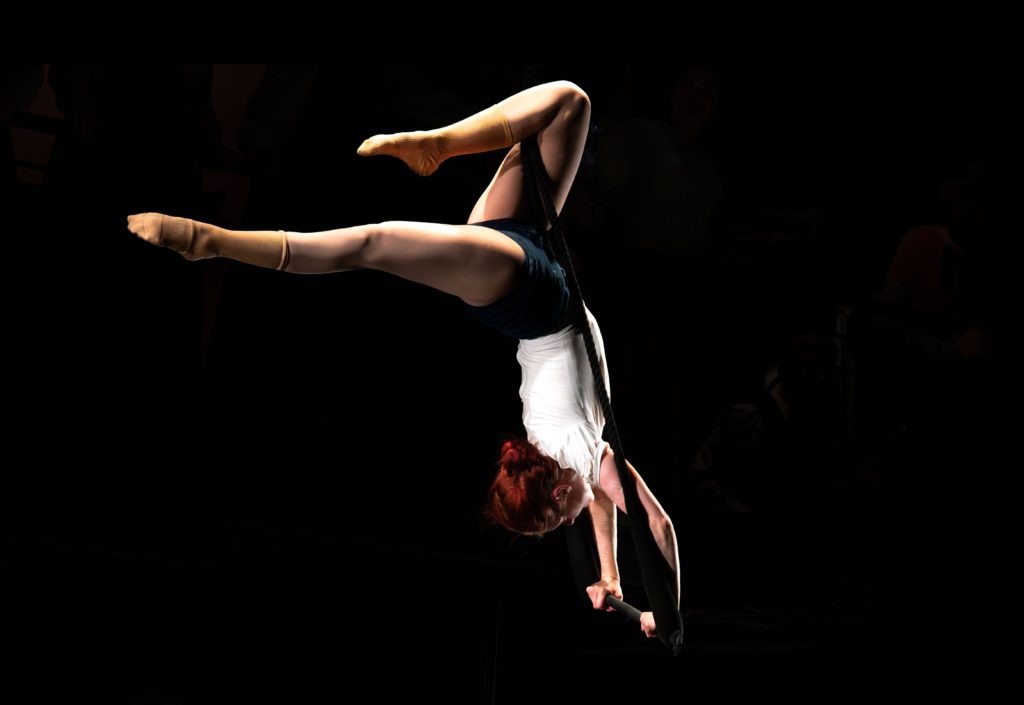
Gymnastic skill: Christie Barnes’s Brynhild Benson in His Last Report. Picture: Natasha Sinton
